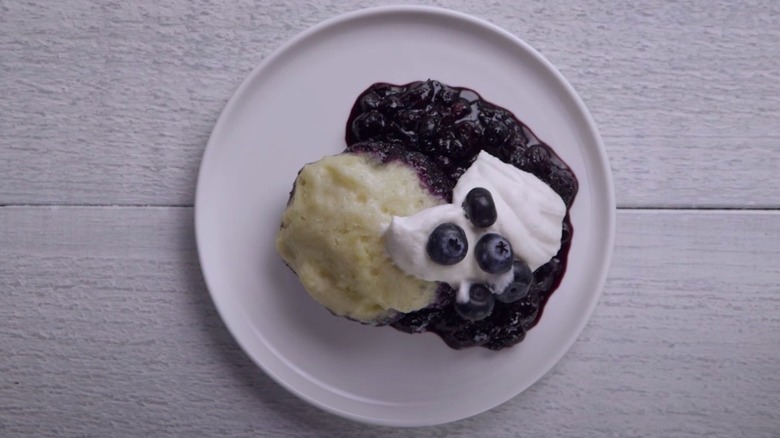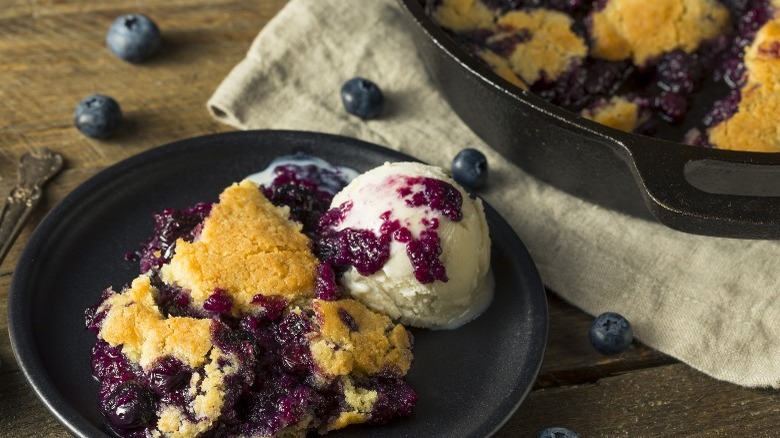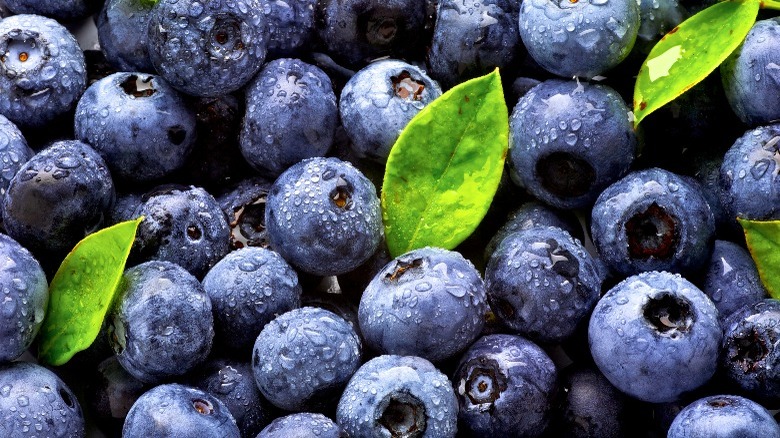Grunt: Cobbler's New England Cousin
Do you have some fresh fruit on hand that needs to be eaten up? Maybe you're just looking for an excuse to go berry picking. Or perhaps you're on the hunt for a new end-of-summer dessert to please the fam. If any of these sound like you, look no further than the New England grunt.
An old-fashioned summertime fav in the New England region, the grunt is delicious, inexpensive, and simple to make, just like its more widely-known cousin, the cobbler. And just like cobbler (and all its other closely-related variations like the crisp, the buckle, and even the pandowdy), the grunt belongs to that category of deep-dish desserts (comprised of fruit — most often blueberries or blackberries — and dough) that bring back the comforting nostalgia of home. What's not to like?
While minor differences abound between this family of desserts — just like your own cousins — they all appear to be subtle variations on a basic theme. The main differences between the cobbler and a grunt all boil down to the cooking methods and the resultant consistency of the dough in the finished product. And knowing and playing up to this distinction is key if you want to make a truly authentic grunt.
Traditional grunt versus cobbler
Traditionally, one of the main ways a grunt is distinct from a cobbler (above) is that a grunt is cooked on the stovetop in a cast iron skillet, as opposed to baked in the oven in a baking dish. Essentially, these two cooking methods give the cobbler more of a baked-biscuit top, while the grunt's topper has more of a steamed dumpling texture. In the end, though, they are both really just less fussy versions of a pie.
To make a grunt, the berries are brought to a simmer on a stovetop burner in a mixture of water and sugar (a Dutch oven can substitute for an iron skillet in a pinch). Once the mixture has thickened (about 15 minutes), the dough is then dolloped on top, leaving some room in between for the doughy mixture to expand. Cooking continues on the stove, but now with the lid on, just long enough for your dumplings to puff up and steam cook through. Some recipes call for lemon juice to accentuate its fruity essence, pump up tartness, and balance sweetness depending on your particular batch of berries. Cinnamon and/or powdered ginger are also added to round out the homey flavors. But if being 100% authentic to tradition isn't a priority for you, or you prefer a browner, crisper top, who's to know if you finished your grunt in the oven?
Why is it called a grunt?
The grunt has roots in early colonialism and was the result of New England colonists' efforts to mimic English steamed puddings while using the limited cooking equipment that was available to them at the time. The grunt earned its very interesting-sounding name from the gurgling sounds emitted by the bubbling berries as they simmered in a rolling stew of gooey sweetness.
Served by scooping out a warm, sticky helping and then flipping it into a waiting bowl (so that the dumplings are on the bottom, with the berries playing a supporting role as a saucy topping), this bright and sugary dessert is also sometimes called a "slump," after the hunched or fallen appearance of the dish. Often topped with a scoop or two of whipped cream or ice cream, the grunt makes a perfect late-summer/berry season treat the whole family can enjoy (but you can also substitute frozen berries if you want to enjoy this dish year-round!). Regardless of when it's made, it's sure to leave nary a single grunt of disapproval, despite its quirky name.


